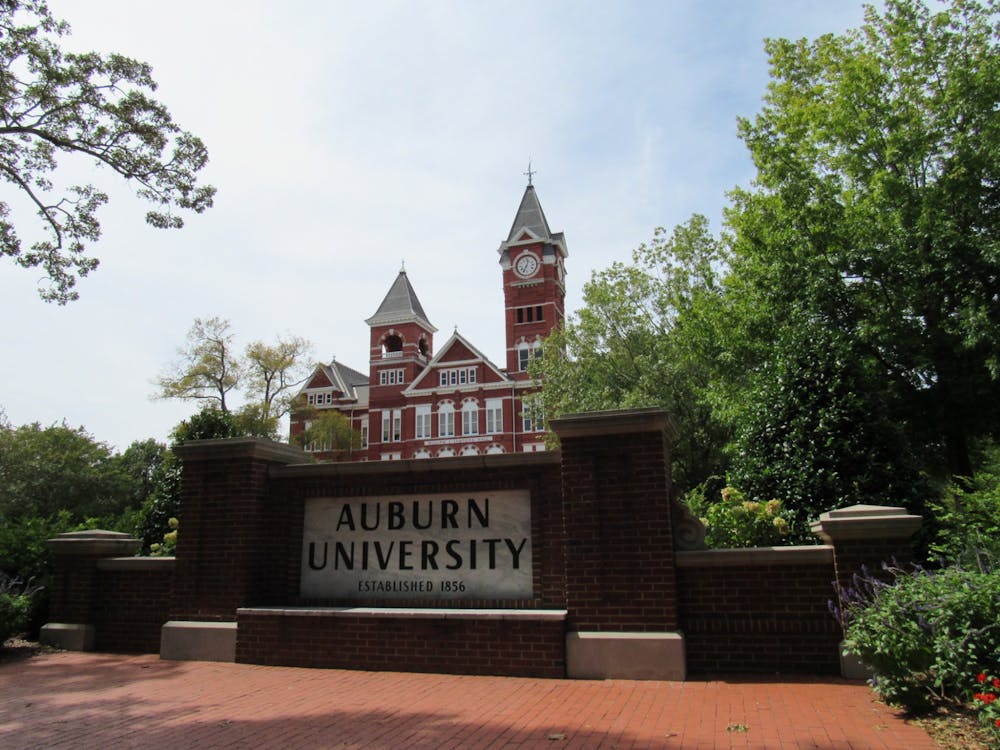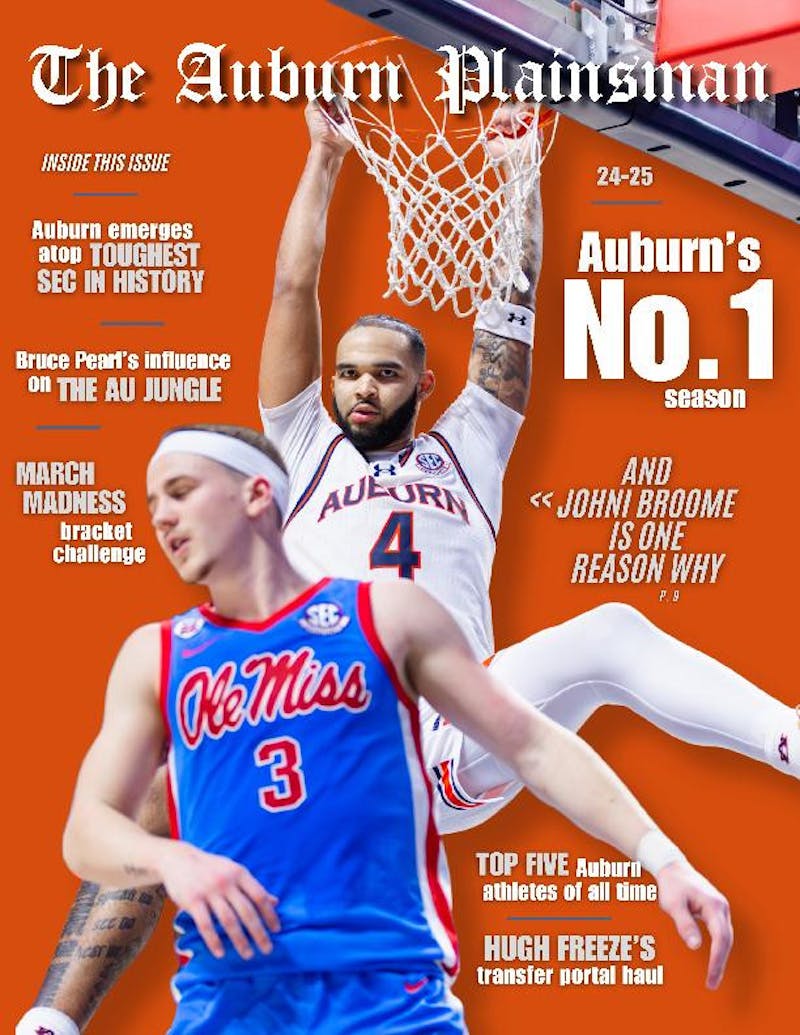This is an ongoing story, The Plainsman will update at more information comes in.
On Sept. 17 at 1:00 p.m. Auburn University released a statement via social media stating that employees had made social media posts that were at odds with the university’s beliefs. These employees were terminated.
On Sept. 26, the American Association of University Professors (AAUP) at Auburn met with President Christopher Roberts and Provost Vini Nathan to discuss the terminations. Upon the completion of this meeting and a receival of the minutes, an anonymous source reached out to The Plainsman with those minutes.
The first and only item in the agenda reads as follows: “Agenda Item #1: Speech and Policy: Faculty and staff have reached out from across campus with their concerns about the implications of Dr. Roberts’ statement regarding the recent AU employee firings.”
Under this item, there are three bullet points, two of which point attention to articles that deal with Auburn and other universities around the country firing employees due to their statements regarding the death of Charlie Kirk. The third item, was the code of conduct document.
The item with the code of conduct reads as follows: “The Code of Conduct document states that, ‘While the Code is not a policy, all policies emanate from the Code’ (pg. 11). While Dr. Roberts did not reference a policy specifically, the Employee Conduct and Job Rules policy (8.3) outlines specific categories of violations, with Group 1 offenses being subject to immediate termination.”
Finally, in the layout of the agenda, there’s a note. Which reads:
“NOTE: The purpose of the agenda item above was to help the administration understand how we struggled to understand the statement, and specifically, what warranted the terminations. The overarching message to us from the administration was that this was not a free speech issue, but rather a safety issue. They underscored that campus safety is the first priority, and the recent decisions related to terminating employees came as a result of an established process that considers the safety of the campus community.”
These issues were immediately addressed by President Roberts. He stated that there is no person or group assigned with monitoring social media posts, the “community” monitors speech. He also stated that he regretted some elements of his statement, which caused confusion over “offensive speech vs threatening speech.” He also stated that actions taken went through a process related to “safety/threats/promotion of violence” instead of just “offensive statements” which were also confused in his statement.
From Roberts’ sentiments, AAUP decided that faculty and staff need more transparency about the process used to assess safety concerns and how it will be used in the future. They also determined that this process should be distinguished from administrative issues more directly related to academic freedom and or free speech that isn’t threatening but subjectively offensive.
These statement from Roberts led AAUP to follow up with more questions:
- How does the administration draw the line between speech that violates university policy based on the code of conduct and speech protected by the First Amendment?
- Has the administration outlined what speech is unprotected by the First Amendment? If so, would it be possible to clarify this in university policy?
- One of the Group 1 violations involves “indulging in grossly offensive, obscene, or immoral conduct” (item d). While many acts would generate overall agreement, this item has a subjective nature. Can the administration provide clarity on what this type of conduct looks like? Would it be possible to change the language in the policy to reflect conduct that is more concrete and less open for interpretation?
- Has the administration considered situations where insensitive or offensive social media posts would warrant more progressive disciplinary procedures (vs. dismissal) as outlined in Employee Relations policy 8.4?
- Can the administration offer other recommendations to help faculty and staff interpret policy correctly? For instance, does “misappropriating University property” (item f) include utilizing university computers or tablets for personal use, such as social media activity?
They stated that item one was not directly addressed thoroughly because the administration believed that the issue was related to campus safety. Item four wasn’t addressed in the meeting as the meeting ran out of time, however policies are being monitored and the item will be brought up again.
Item two was addressed. The minutes read as follows: “The topic of free speech was more limited because the discussion in the meeting focused on understanding the threat assessment process. However, hard copies of the freedom of speech guide from Washington State University were distributed because it offers a comprehensive tutorial. The committee emphasized the need for more guidance on how the administration understood both protected and unprotected speech, even if the administration did not see the recent terminations through a free speech lens. A resource like the one provided at WSU could be useful to faculty and staff. This suggestion was not totally dismissed, but it also did not get a positive reception. We will continue to emphasize it.”
Item three was addressed, in which Roberts stated that there was an attempt to revise the code of conduct and employee relations policies however, these recommendations were submitted but edits were put on hold. Both documents were last updated in 2019.
Item five led the group (AAUP) to decide that they needed additional clarity about what policies they are held to, how these policies are enforced and that they need increased training opportunities so that they can remain in compliance with these policies.
The notes conclude with a note from senate members:
“Overall, we would appreciate more insight into how the administration interprets constitutionally (un)protected free speech. Additionally, we seek guidance on how AU personnel can ensure that their social media accounts do not violate AU’s Code of Conduct and how it will be (or is) reflected in university policy. It would also be helpful to clarify terms that may be open for interpretation (e.g., offensive, hurtful, immoral, insensitive) so that AU personnel have proper guardrails when speaking on social media and other platforms. As an example, Washington State provides such guardrails."
"NOTE: While the discussion turned to understanding how the administration approached the recent terminations, the committee underscored the need for more transparency about this process, and also the need to communicate the distinction between protected and unprotected speech. While AAUP is not a formal governance group, we will monitor progress to changes in the policy on Employee Conduct and Job Rules.”
Upon reading, reviewing and writing about the AAUP minutes, The Plainsman reached out to Jennifer Adams, Vice President for Public Affairs, Communication & Marketing for Auburn University, with the following questions.
- In regard to these individuals' statements, what exactly was against the creed and Auburn's values? Are these things blatantly stated in the employee handbook?
- Am I correct in assuming that the employee relations policies handbook and the code of conduct lay these things out for employees? If so, can you give more insight into these policies. Specifically, the ones laid out in the original article, which are very unclear.
- What is the university's stance on free speech? How does the University determine what can and can't be said? How do you all know there's no "infringement" on this right?
- The social media statement is extremely vague, leaving readers guessing the subject that individuals were fired for. Is the administration saying that the individuals were fired because their social media posts represented threatening behavior and not just reprehensible speech?
Adams has yet to respond.
At this time, terminated individuals' identities still remain unknown to the Auburn University community.
Do you like this story? The Plainsman doesn't accept money from tuition or student fees, and we don't charge a subscription fee. But you can donate to support The Plainsman.

Brychelle Brooks, senior majoring in public and professional writing with a minor in information systems, has been with The Auburn Plainsman since August 2023. She previously served as the Campus Reporter, Opinion Editor and Newsletter Editor. She is currently serving as the Editor-in-Chief.





